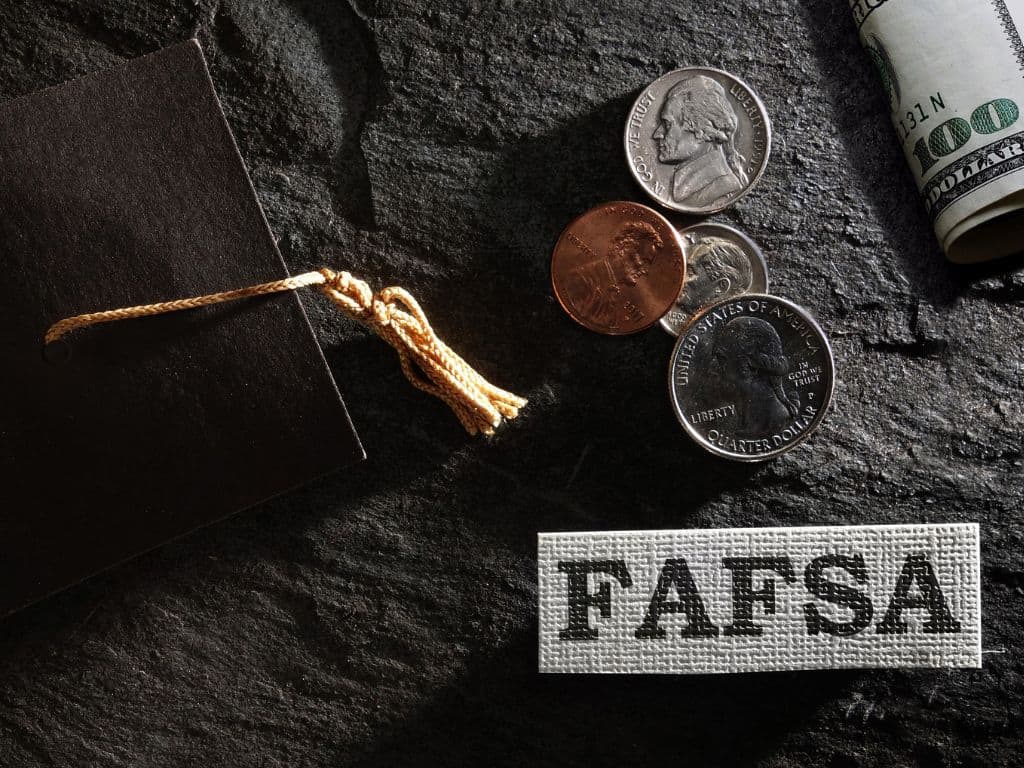Financial aid is critical for many college students. Via financial aid, college students can get amazing discounts on tuition, residence, and more! But how long does it take to reach your school—and, after that, your bank account?
How long does it take for financial aid to direct deposit? A Financial aid direct deposit usually reaches your college around 10–30 days after classes start. However, depending on your college and the financial aid program, you may receive only a fraction of the financial aid you thought you had.

The money left after tuition (et al.) will be deposited into your bank account after the school deducts the necessary funds.
Financial Aid Direct Deposits
After submitting your FAFSA form, your information should be approved within 3–10 days. Submitting electronically will decrease your wait time substantially; there is no benefit to filling out the paper form.
Your financial aid may take longer to reach your college (and your bank account) if you filled out the FAFSA incorrectly, so please fill things out correctly the first time!
Also, every college disburses financial aid differently, so you must contact the correct department at your college to see when you will get your money.
Financial aid may also take longer if it is your first time applying for it. This is nothing more than you being new to the system. Don’t worry about the delay in this case!
Federal aid is only available for full-time students. If your financial aid is delayed, check that you have the right amount of credit hours. Again, you must talk to your college’s financial aid department for details.
When Will I Get the Remaining Money?
First, because financial aid does not appear in your account until a few weeks after classes start, you cannot count on using it for, say, necessary textbooks. Set some funds aside for essentials. Even so, most colleges get their cut before you get access to the money; you will get a fraction of your financial aid as spendable funds.
After financial aid has paid for tuition and living fees, the remaining money will be sent to your bank account. The exact time it takes to reach your bank account will vary with your bank. Generally, direct deposits take 2–3 business days to be accessible in your account.
What Does Financial Aid Cover?
Along with tuition and room and board, financial aid can cover many other expenses related to your education. For example, you can buy essentials like food and clothing using financial aid. You can even use it to buy computers for class!
You might be surprised that financial aid can pay for all of the following:
- Textbooks
- Computers
- Other school supplies
- Groceries
- Fuel for a car
- Transportation
- Bills
- Clothing
Note that you can use financial aid to buy fuel, but you cannot use financial aid to buy the car itself. Financial aid also does not cover extracurricular activities, dorm decorations, or anything else not directly related to your education. If something is a want rather than a need, it will probably not be covered by financial aid.
How Do I Get Financial Aid?
Your first step to getting any financial aid is filling out the FAFSA form, which is available here. From there, the government and/or your college will let you know if you qualify for any kind of financial aid. You may also receive scholarship or grant offers shortly after being accepted for college.
What Types of Financial Aid Are There?
According to StudentAid.gov, there are four basic types of financial aid:
- Grants
- Scholarships
- Loans
- Work-Study Jobs
These all have different requirements and terms. This table will make it easy for you to determine what type(s) of financial aid you may qualify for:
| Financial Aid Type | Source(s) | Qualifications | Pay It Back? |
| Work-Study | Government | Depends on the career path. | No. Ideally, it pays you! |
| Grant | Government | Financial need; specific fields of study; a parent died during military service. | Sometimes; you will receive a notification concerning repayment. |
| Scholarship | Non-profit and private organizations | Varies significantly with the scholarship; for example, military families, minority groups, and talented students may all have separate scholarships. | No. |
| Loan | Government, banks, private organizations | Varies with loan type; some loans require a good credit history. Often based on financial need. | Yes. |
Not all of these come from the government. Many of them come from private organizations. Read the fine print of your financial aid carefully.
Also, different colleges treat financial aid differently. Just because someone didn’t have to fill out FAFSA for their merit scholarship doesn’t mean you will get the same luxury! Your college will tell you what needs to be done to get financial aid, but you should still research the topic on your own.
Conclusion
Most forms of financial aid will go to your college first: tuition, dorms, textbooks, and so on. The average time it will take your college to receive the money is anywhere from 10–30 days after classes begin. After that, the school should deposit your money into your bank account if you selected that option.
Your financial aid direct deposit should not take long to show up in your account. If there seems to be a delay, or you have other issues with financial aid, ask the financial aid services at your college. If you’re new to the system, there is probably nothing to worry about, but better safe than sorry when thousands of dollars are involved!
